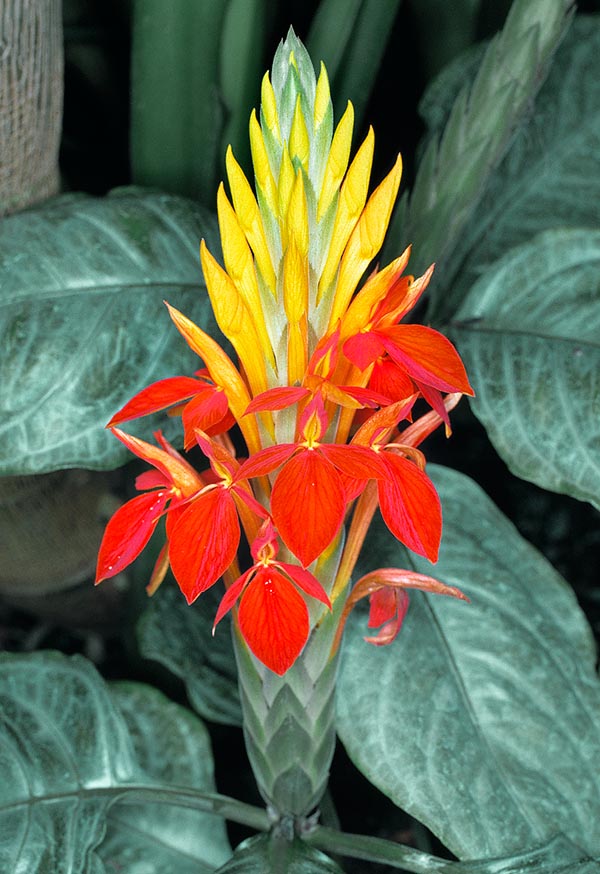Family : Acanthaceae

Text © Pietro Puccio

English translation by Mario Beltramini

Native to tropical America, suffruticose or shrubby, Aphelandra aurantiaca can be 120 cm tall. The flaming 20 cm inflorescences, with orange red 5 cm flowers, last even 50 days © Giuseppe Mazza
The name of the genus is the combination of the Greek words “aphelés” = simple and “andros” = man, with reference to the anthers made by only one sac; the Latin name of the species, “aurantiaca” = of orange colour, refers to the colour of the inflorescence.
Common names: “afelandra” (Italian); “fiery spike”, “orange scarlet aphelandra” (English); “aphélandre”, “épi ardent” (French); “Glanzkölbchen” (German); “espiga ardiente”, “lirio de campo” (Spanish).
Suffruticose plant (that is, herbaceous plant partially lignified) or shrubby, evergreen, tall even 1-1,2 metres, it shows ovate or elliptic leaves of an intense green colour with silvery veins, long 10-22 cm and 5-10 broad. The inflorescences are terminal, long lasting (40-50 days) spikes, long about 20 cm, with showy orange red flowers, 5 cm long, with tri-lobed lower petal. The fruit is an about 15 cm long capsule, containing a maximum of four pubescent seeds.
It reproduces by seed and by cutting.
Plants which can be cultivated in the tropical and subtropical climates, in well drained, but kept humid, soils, rich in organic substance, sub-acid or neutral, in full sun or partial shade. Elsewhere, they can be cultivated in pot, in order to be kept sheltered during the cold periods or to be utilized for indoor decoration.
Synonyms: Hemisandra aurantiaca Scheidw. (1842); Aphelandra aurantiaca var. roezlii Van Houtte (1868); Aphelandra acutifolia Tafalla ex Nees (1847); Aphelandra repanda Nees (1847); Aphelandra nitens Hook. (1868); Aphelandra roezlei Carrière (1872); Aphelandra paraensis Lindau; Aphelandra aurantiaca var. stenophylla Standl. (1929); Aphelandra lonchochlamys Leonard (1953).
